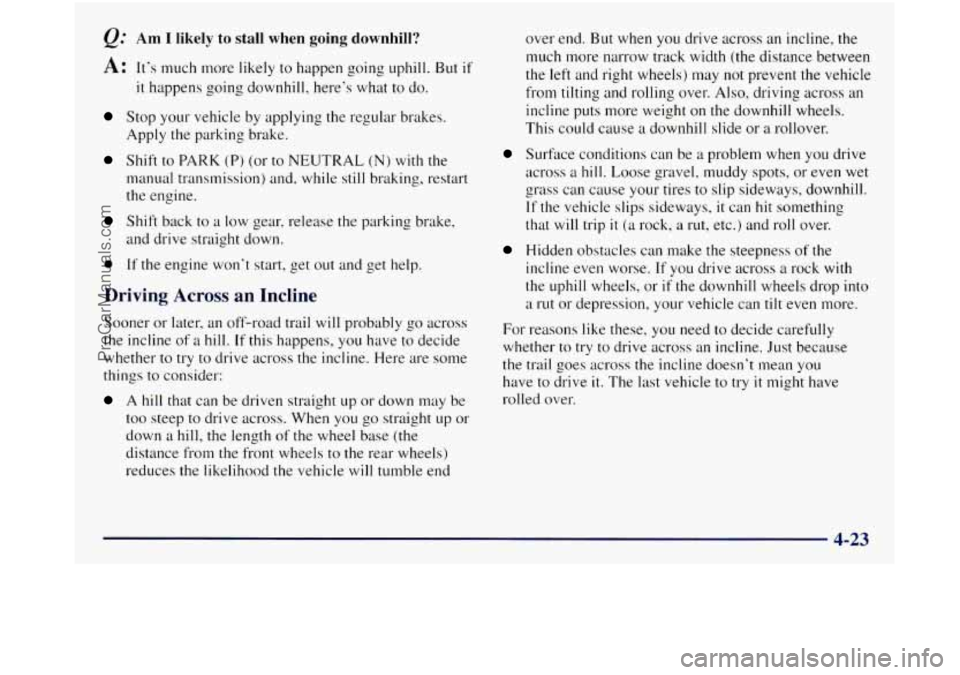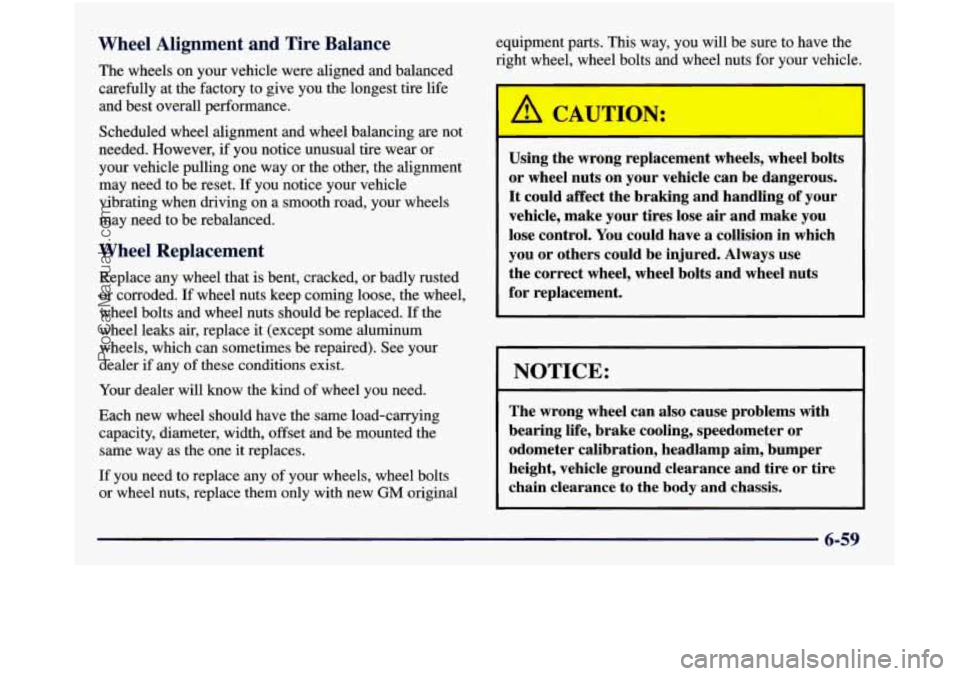Page 33 of 452
Q." What's wrong with this?
A: The belt is twisted across the body.
You can be seriously injured by a twisted belt. In
a crash, you wouldn't have the full width of the
belt to spread impact forces. If a belt is twisted,
make it straight
so it can work properly, or ask
your dealer to
fix it.
1-21
ProCarManuals.com
Page 211 of 452

Q.' Am I likely to stall when going downhill?
A: It's much more likely to happen going uphill. But if
it happens going downhill, here's what to do.
Stop your vehicle by applying the regular brakes.
Apply the parking brake.
Shift to PARK (Pj (or to NEUTRAL (Nj with the
manual transmission) and, while still braking, restart
the engine.
Shift back to a low gear, release the parking brake,
and drive straight down.
0 If the engine won't start, get out and get help.
Driving Across an Incline
Sooner or later, an off-road trail will probably go across
the incline of a
hill. If this happens, you have to decide
whether to try to drive across the incline. Here are some
things to consider:
A hill that can be driven straight up or down may be
too steep to drive across. When you go straight up or
down a
hill, the length of the wheel base (the
distance from the front wheels to the rear wheels)
reduces the likelihood the vehicle will tumble end over end.
But when
you drive across an incline, the
much more narrow track width (the distance between
the left and right wheels) may not prevent the vehicle
from tilting and rolling over.
Also, driving across an
incline puts more weight on the downhill wheels.
This could cause
a downhill slide or a rollover.
Surface conditions can be a problem when you drive
across
a hill. Loose gravel, muddy spots, or even wet
grass can cause your tires to slip sideways, downhill.
If the vehicle slips sideways, it can hit something
that will trip
it (a rock, a rut, etc.) and roll over.
Hidden obstacles can make the steepness of the
incline even worse.
If you drive across a rock with
the uphill wheels, or
if the downhill wheels drop into
a rut or depression, your vehicle can tilt even more.
For reasons like these, you need to decide carefully
whether to try to drive across an incline. Just because
the trail goes across the incline doesn't mean you
have to drive it. The last vehicle to try
it might have
rolled over.
4-23
ProCarManuals.com
Page 349 of 452

Wheel Alignment and Tire Balance
The wheels on your vehicle were aligned and balanced
carefully at the factory to give you the longest tire life
and best overall performance.
Scheduled wheel alignment and wheel balancing are not
needed. However,
if you notice unusual tire wear or
your vehicle pulling one way or the other, the alignment
may need to be reset.
If you notice your vehicle
vibrating when driving on a smooth road, your wheels
may need to be rebalanced.
Wheel Replacement
Replace any wheel that is bent, cracked, or badly rusted
or corroded. If wheel nuts keep corning loose, the wheel,
wheel bolts and wheel nuts should be replaced. If the
wheel leaks
air, replace it (except some aluminum
wheels, which can sometimes be repaired). See your
dealer if any
of these conditions exist.
Your dealer will know the kind of wheel you need.
Each new wheel should have the same load-carrying
capacity, diameter, width, offset and be mounted the
same way as the one it replaces.
If you need to replace any of your wheels, wheel bolts
or wheel nuts, replace them only with new
GM original equipment
parts. This way, you will be sure to have the
right wheel, wheel bolts and wheel nuts for your vehicle.
~ Using the wrong replacement wheels, wheel bolts
or wheel nuts on your vehicle can be dangerous.
It could affect the braking and handling of your
vehicle, make your tires lose air and make you
lose control. You could have a collision in which
you or others could be injured. Always use
the correct wheel, wheel bolts and wheel nuts
for replacement.
~
NOTICE:
The wrong wheel can also cause problems with
bearing life, brake cooling, speedometer or
odometer calibration, headlamp aim, 'bumper
height, vehicle ground clearance and tire or tire
chain clearance to the body and chassis.
6-59
ProCarManuals.com